NI state papers: NI to Scotland rail tunnel considered in 1960s
- Published
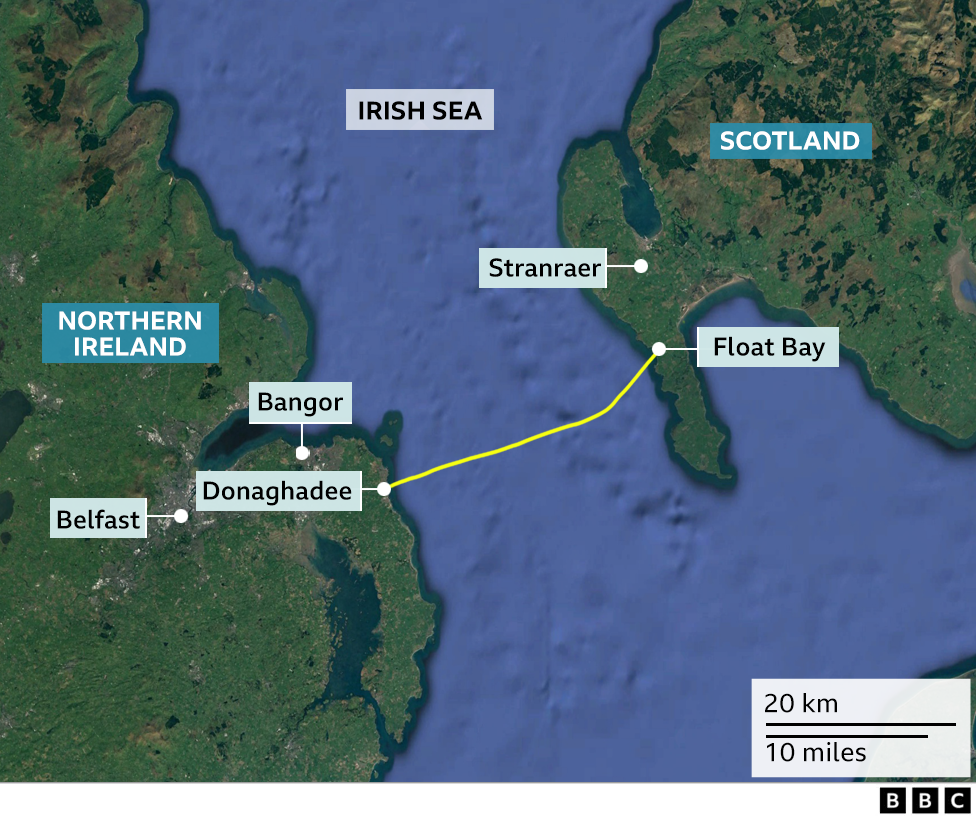
Stormont considered building a 23-mile 'Ulster Tunnel' railway line from Donaghadee to Portpatrick in Scotland
Long before any 'Boris bridge' Stormont considered building a 23-mile 'Ulster Tunnel' railway line from Donaghadee to Portpatrick in Scotland.
That is according to newly-released official papers from the Public Record Office of Northern Ireland (PRONI).
A number of councils backed the plan in the early 1960s, initially spearheaded by a butcher called George McCartney.
But the Stormont government ultimately decided the rail tunnel under the Irish Sea was not viable.
Most of more than 600 state files released by PRONI are from the year 2000.
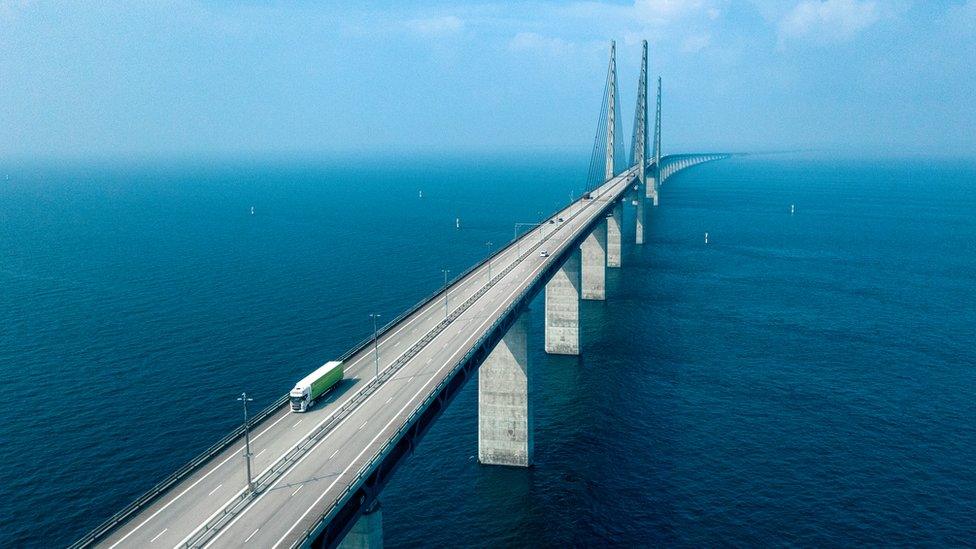
Plans for a bridge Northern Ireland to Scotland backed by Boris Johnson were scrapped in 2021
But the papers about the proposed Irish Sea railway tunnel date from 1961 to 1964.
In the early 1960s the UK and French governments were in discussions about the feasibility of building what would eventually become the Channel Tunnel which opened in 1994., external
In 1961, a member of Moira Rural Council, George McCartney, called for the then Stormont government to investigate building a tunnel between Donaghadee in Northern Ireland and Portpatrick in Scotland.
His call was supported by a number of other councils across Northern Ireland.

Councils in Ballyclare, Omagh, Limavady, Ballymena and Dungannon all backed the tunnel proposal
For instance councils in Ballyclare, Omagh, Limavady, Ballymena and Dungannon were among those to write to Stormont's Ministry of Commerce backing the tunnel proposal.
"It is felt that such a connection would be of inestimable value to Ulster in view of the high cross-channel freight rates and the number of tourists which would be attracted to the Province in this way," Moira Council wrote.
In 1964, Prof Alan Wells, an engineer, submitted detailed plans to Stormont on how the 23-mile tunnel would be constructed, its cost and potential revenue., external
That prompted a number of Stormont departments to enter into more detailed consideration.
Prof Wells proposed a "single track rail tunnel" under the Irish Sea between Donaghadee and Float Bay close to Portpatrick.
The trains running between the two countries would be big enough to carry cars and lorries.
He estimated that the rail tunnel via a tube on the sea bed would cost £35m to build - in 1964 prices - and be operational by 1970.
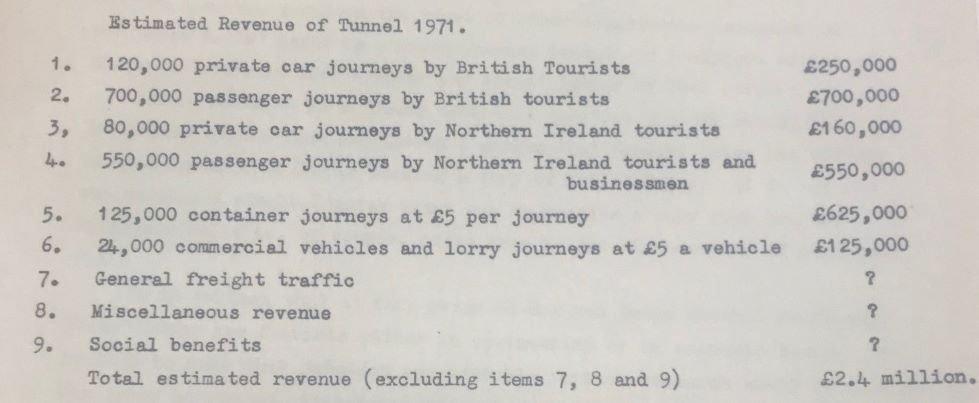
Prof Wells estimated the tunnel would make £2.4m of revenue in its first year of operation
Prof Wells said the tunnel would create "significant revenue" due to "the carriage of passengers with private cars and commercial vehicles in excess of present capacity by sea".
"It is estimated that one train of 100 vehicles could pass from shore to shore in each direction every hour," his proposal said.
"Four thousand vehicles could be carried with their passengers each day leaving four hours probably during each night for rail transits."
He estimated that 600,000 vehicles would use the rail tunnel in 1971 and suggested charges of £2 per vehicle and £1 per passenger.
An initial response from Stormont's Ministry of Home Affairs said "there is nothing inherently impossible in the various ingenious techniques which are proposed".
Another official wrote that there might be "justification for going ahead with a technical study to discover whether the tunnel could eventually be built for £35m".
'Pure guesswork'
But others in government were more sceptical.
One memo described Prof Wells' traffic estimates as "pure guesswork" and questioned if the rail tunnel would generate enough money to justify the cost of building it.
"On optimistic assumptions £2.4m might be the revenue of the tunnel in its first year of operation in 1970," the memo said.
"Over a 20-year period revenue would of course increase at a compound rate say of 4% a year to reach about £5m a year by 1990.
"Thus even on an average basis revenue cannot meet the estimated cost of £80m over a 20-year period."
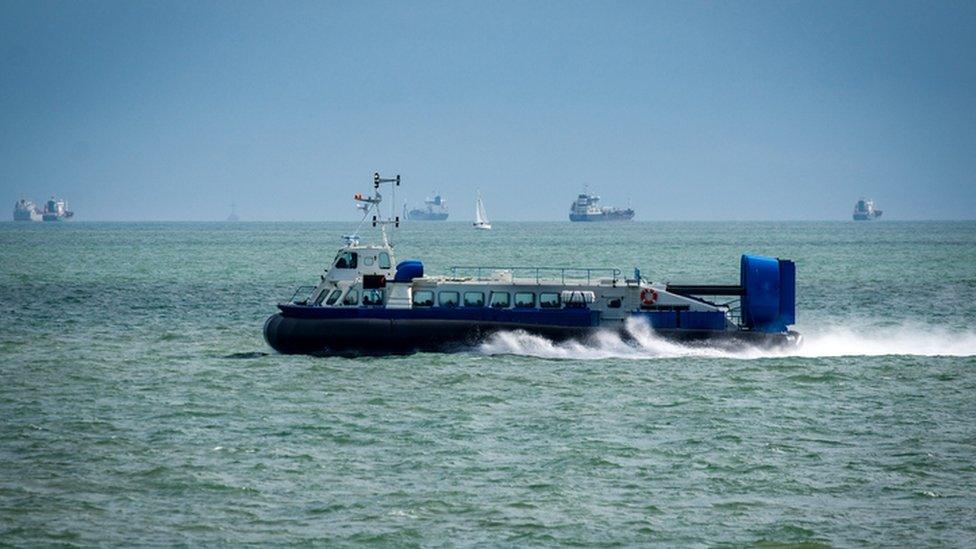
One Stormont memo suggested transporting cars by air and hovercraft was "the future"
Other officials were concerned about the safety of a tunnel built over Beaufort's Dyke, a deep submarine trench in the Irish Sea used as a munitions dump., external
"It would be well to remember that the area in and around Beaufort's Dyke was used as a dump for surplus explosives during and after the last war and these would certainly add to the hazards of any operation," one wrote.
It was eventually decided that the Irish Sea rail tunnel would be "uneconomic" for Stormont to finance.
Instead, another Stormont memo said, transporting cars by air and hovercraft was "the future".
- Published10 March 2021
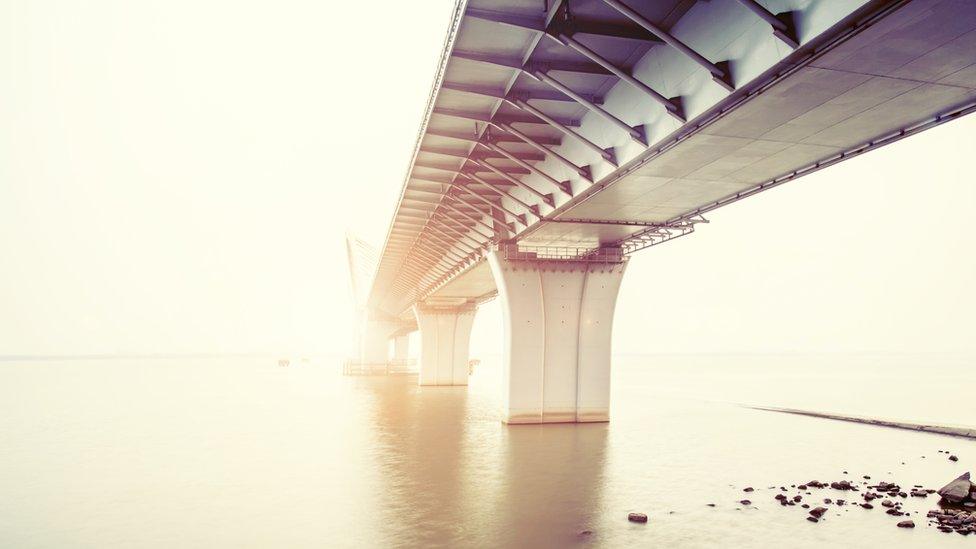
- Published8 December 2022
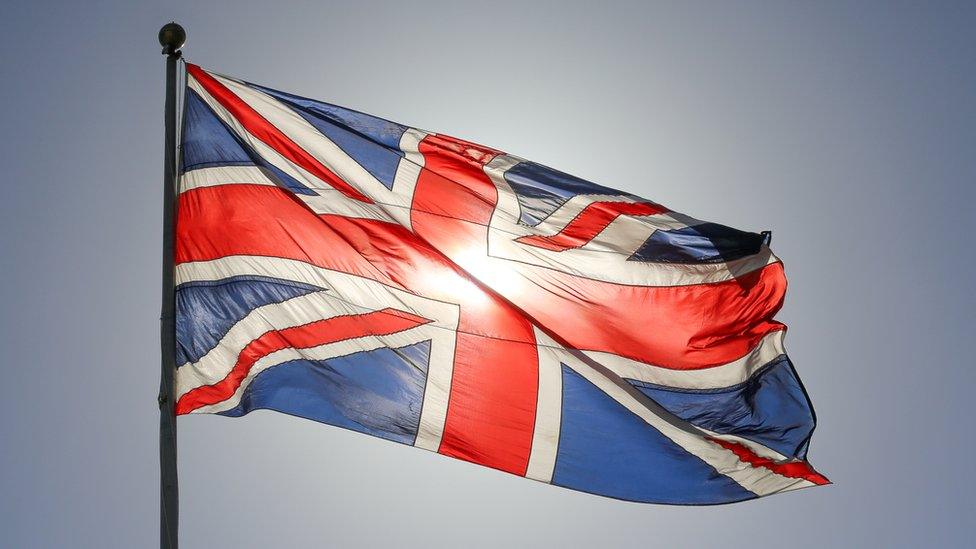
- Published21 November 2021
